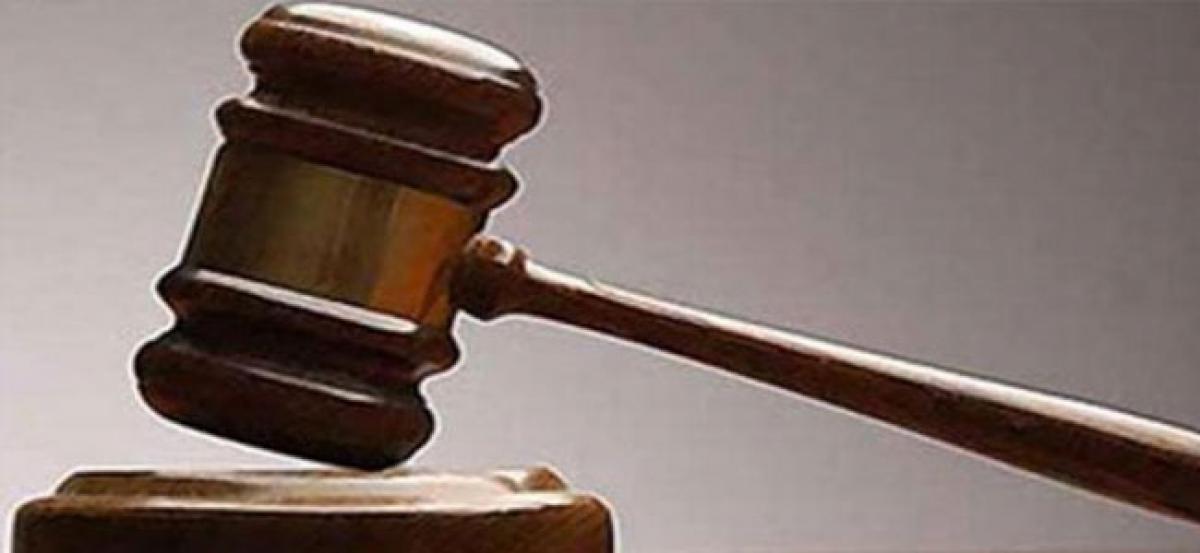Live
- Over 7,600 Syrians return from Turkiye in five days after Assad's downfall: minister
- Delhi BJP leaders stay overnight in 1,194 slum clusters
- Keerthy Suresh and Anthony Thattil Tie the Knot in a Christian Ceremony
- AAP, BJP making false promises to slum dwellers for votes: Delhi Congress
- 'Vere Level Office' Review: A Refreshing Take on Corporate Life with Humor and Heart
- Libya's oil company declares force majeure at key refinery following clashes
- Illegal Rohingyas: BJP seeks Assembly session to implement NRC in Delhi
- Philippines orders full evacuation amid possible volcanic re-eruption
- Government Prioritizes Welfare of the Poor, says Dola Sri Bala Veeranjaneyaswamy
- Two Russian oil tankers with 29 on board damaged due to bad weather
Just In
Self Rule Demanded By Adivasi’s, Other rights promised by the Constitution


The discussion between the Adivasi Hakkula Porata Samiti (Tudum Debba), representing the Gond and other adivasis of the Adilabad district, As the Telangana government failed a few weeks ago. Following this, the “Tudum Debba” leaders said they would begin their “self-rule” campaign in their villages from June 1 as they had stated earlier.
The discussion between the Adivasi Hakkula Porata Samiti (Tudum Debba), representing the Gond and other adivasis of the Adilabad district, As the Telangana government failed a few weeks ago. Following this, the “Tudum Debba” leaders said they would begin their “self-rule” campaign in their villages from June 1 as they had stated earlier.
They are only following what the adivasis of Jharkhand have already put in motion.The Munda adivasis have begun Pathalgadi, literally erecting a stone as a mode of protest against the state government’s alleged anti-tribal policies, and to draw the attention of the community towards the rights of the tribals under the Fifth Schedule of the Constitution.
The migration of non-tribals is a long and old story, which took place way back in 1945, the revenue department of the Nizam’s government in Hyderabad commissioned Austrian anthropologist Christoph von Furer-Haimendorf to study the situations of tribals in the state and make appropriate policy recommendations. The tribal groups in the northern areas of Hyderabad narrate how outsiders owned most of the land of the tribal areas which are under cultivation. A typical instance is the Koya (Gond) village of Ragleyanguda in Yellandu taluq. The total area under cultivation here was 1,616 acres. Of a Koya population of 254, there were only five Koya pattadars who together owned 24 acres. It is the same story today and the adivasi have been pushed further into the remaining jungle or into menial existence, while the land has been appropriated by settlers. They are now the majority only by a fraction of their original homelands.
The Banjara, who originally were from western Rajasthan, are well represented in the Telangana Assembly and in have a predominant share of government jobs reserved for Scheduled Tribes. Former Prime Minister Indira Gandhi was known to be particularly fond of the Banjara.
Tribal people are of 8.2 per cent in India’s population. They are spread over all of India’s states and Union territories.
It is with good reason that the Gond adivasis of Telangana are aggrieved with all ST reservation benefits almost entirely flowing to the Indo-Aryan Lambada tribals.Unlike adivasis, the other two broad tribal groups have fared better in the post-Independence period. Within them some, like the Meenas and Gujjars of Rajasthan, and Khasis of Meghalaya, have done exceptionally well, which should make us wonder if they should be eligible to claim benefits as Scheduled Tribes.
We all now know very well that big government in the absence of a quick responsive factors actually means little government, and whatever little interaction the people at the bottom have with the state is usually a not too happy one.
Most tribal villages and settlements have no access to schools and medical care. Very few are connected with all-weather roads. Erase the thought of electricity, though all the coal and most of the hydel projects to generate electricity are in the tribal regions. At the national level, 45.86 per cent of all adivasis live below the poverty line.
The Fifth and Sixth Schedules under Article 244 of the Indian Constitution in 1950 provided for self-governance in specified tribal-majority areas. The Fifth Schedule provides for the administration and control of tribal lands
Governors have been endowed with certain special powers with regard to Fifth Schedule areas. Under the powers conferred by the Fifth Schedule, the governors can not only direct that any particular law or part thereof not apply to a Scheduled Area, but they can also make regulations for good governance and peace in these areas.
The governors have basically been given legislative powers to make regulations for the “peace and good government of any area which is a scheduled area”. However, without exception, the governors have failed to discharge their duties and fulfil their responsibilities.

© 2024 Hyderabad Media House Limited/The Hans India. All rights reserved. Powered by hocalwire.com






